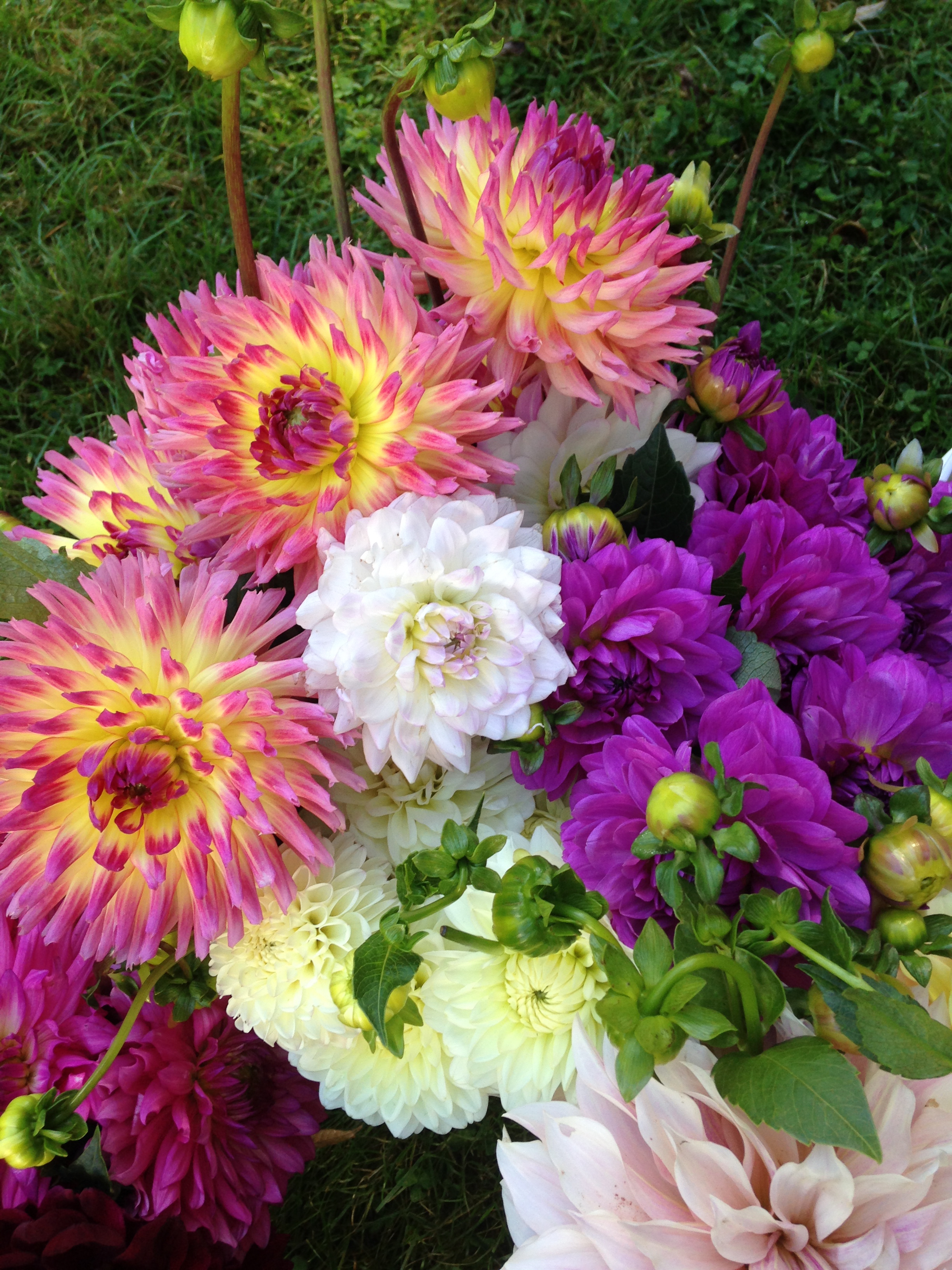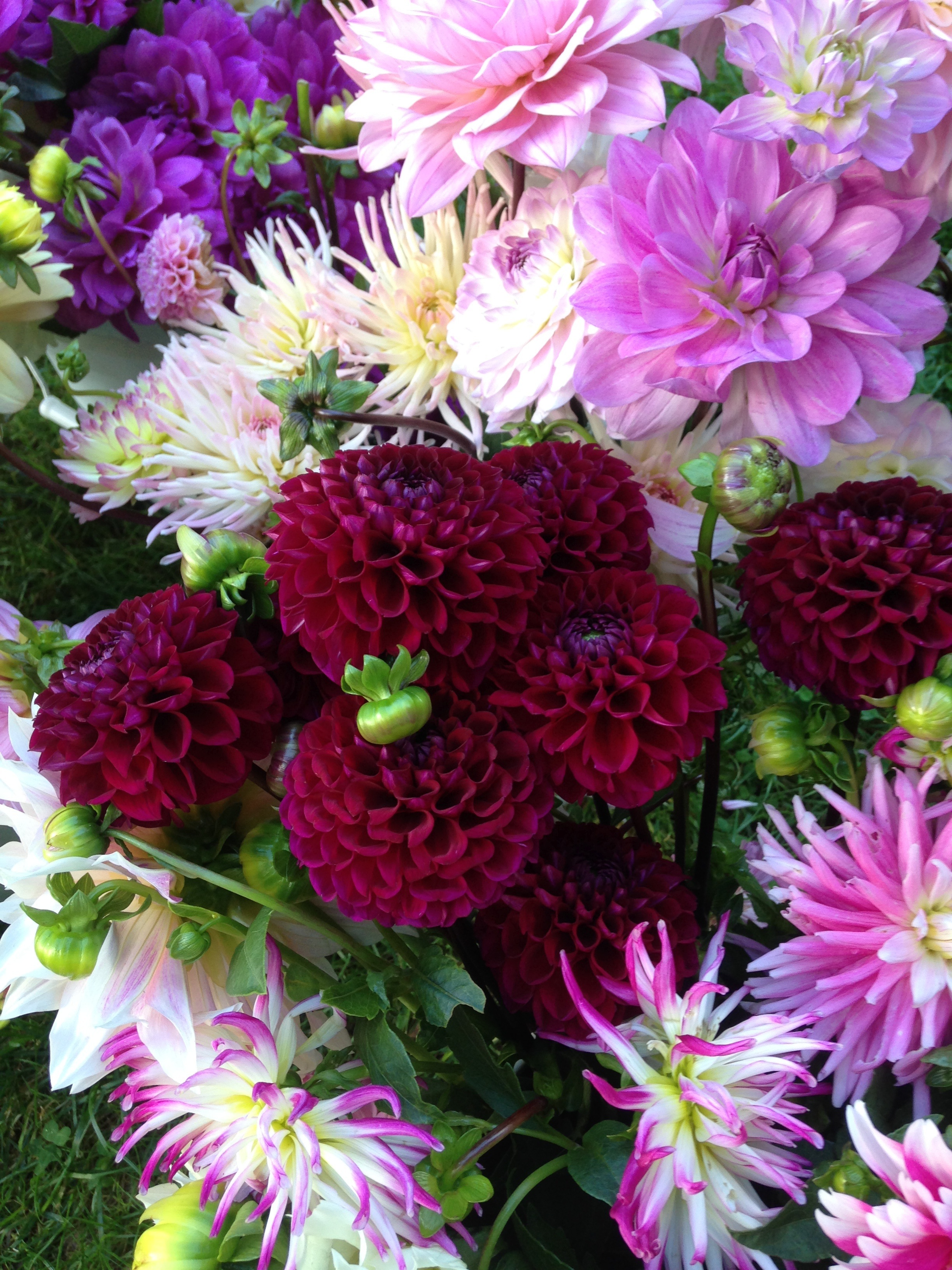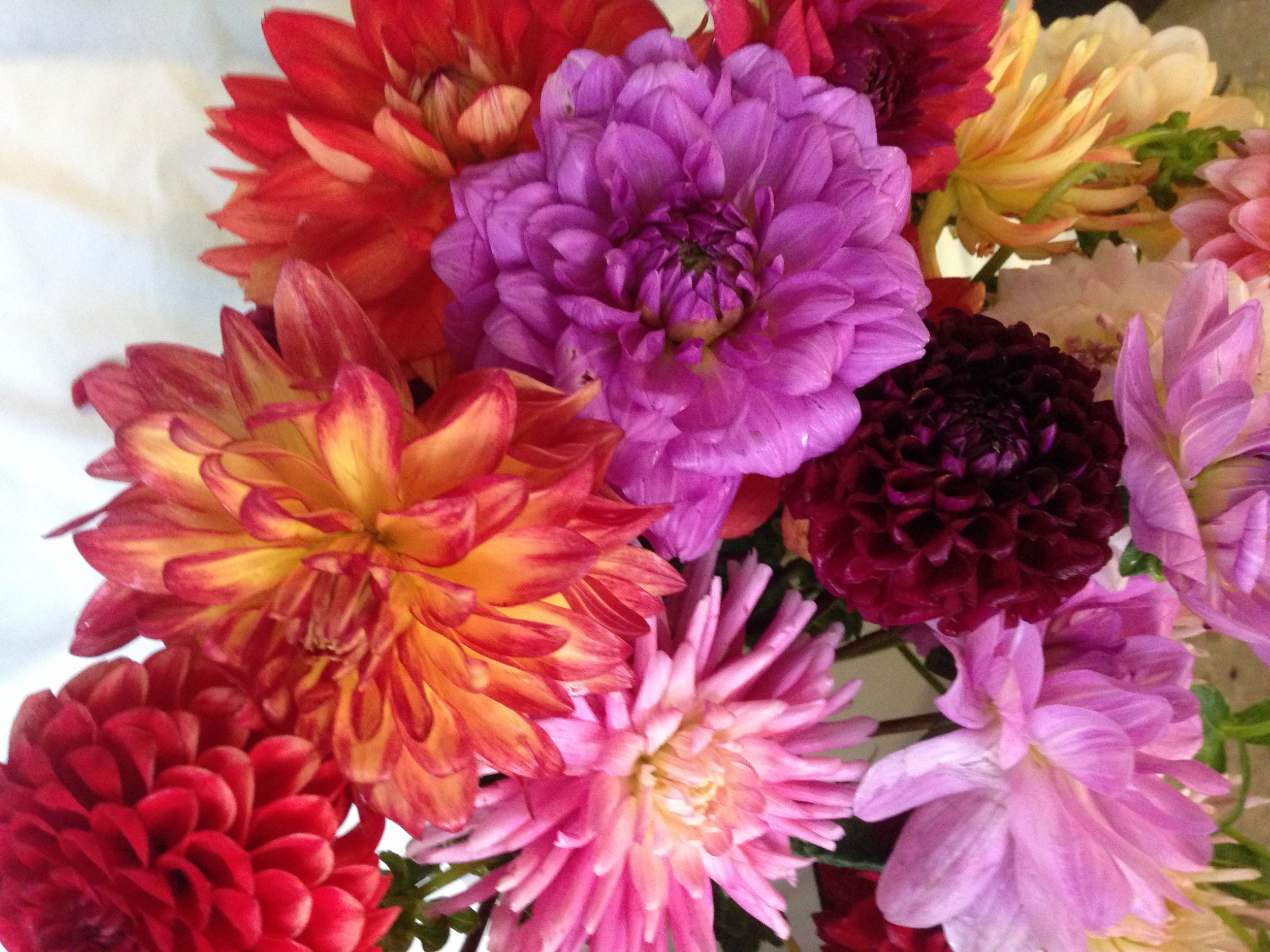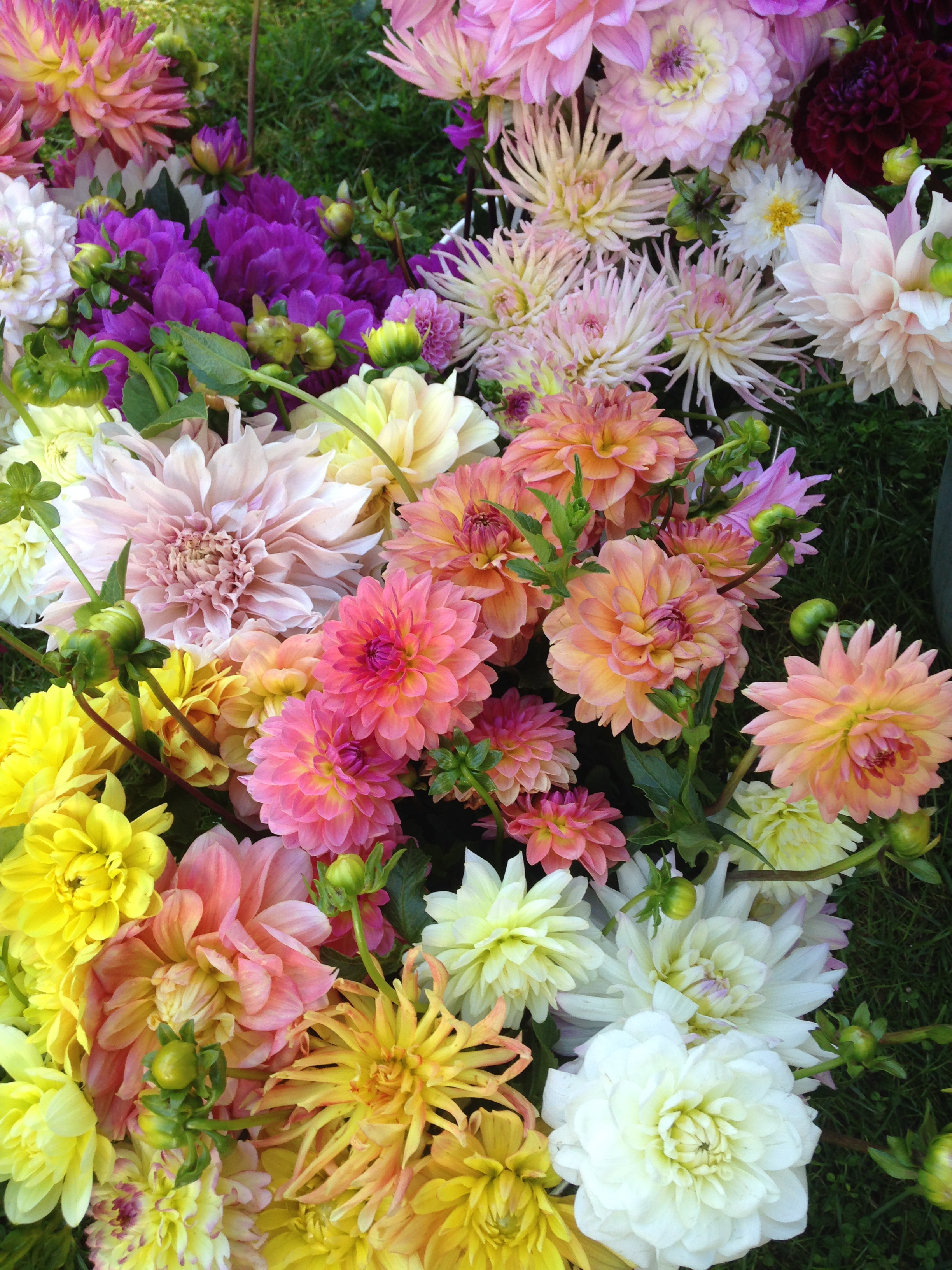Booking 2015 Weddings with Dahlia Love
I thought I would offer up Dahlias as today's fantastic Fleur du Jour as both a way to really make us miss, I MEAN LOOK FORWARD TO, summer and as a way to say I AM NOW TAKING BOOKINGS FOR 2015 WEDDINGS.
While many people think of Dahlias as fall flowers, which they most certainly are, Dahlias here start blooming at the tail end of June and early July. Different varieties are earlier or later by nature in showing off their remarkable blooms. Some variability also results from how early or late spring arrives and from how "on time" I am with putting the tubers in the field. Last year it was cold longer and I was later. That said, I cut the first flower on July 7. If you are planning a wedding before July, no need to worry as plenty of amazing flowers bloom before the dahlias!
For couples looking for late summer and fall weddings, Dahlias can be a lovely addition to bouquets, centerpieces and other floral designs. As a rule, I like to limit my full service weddings to one a day so as to give the best of myself and my flowers. I will add bulk flower orders for DIY brides who are making their own arrangements and will put together bouquets or other wear and carry pieces for the same day for my "Something In Between" brides if I feel I can do so with the quality I demand. So, as we wait for dahlias together, please contact me soon if you, or someone you know, are looking for your 2015 wedding florist. Congratulations to all the BEAUTIFUL wedding couples and their families.











































